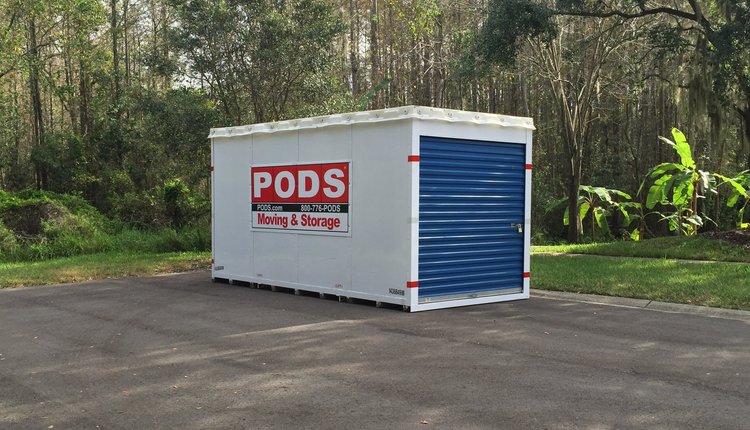As most readers know, the parcel carriers clearly state in their terms that packages tendered are subject to the carriers reweighing the parcel, and / or recalculating the dimensions of a package for the application of dimensional weight. The carriers have invested heavily in technology to automate and simplify this data collection process, which well they must, because millions of packages move through the network daily and visit the sortation hubs where this technology is deployed for only a very short period of time. I was party to the original studies done at Airborne Express to cost justify the cost of investing in such technology and I know firsthand that many packages enter the network with mis-declared weight and or no dimensions stated and the revenue consequence to the carriers of not capturing the correct compensation is tremendous.
Machinery moves parcels at hundreds of feet per minute on rollers, slides and belts and the packages move through devices that scan the bar code tracking number, take a weight reading and use lasers to determine the length, width and height of the transaction. If the weight is higher than that declared at the time of tender, either actual or dimensional, the carrier will bill for the appropriate increase ( and even at times the decrease ) calculated.
Just because a process is automated does not mean its 100% accurate. If you spend enough time wading through invoices or breaking bread with shippers or wandering around carrier’s hubs like I have, you stumble upon what might be a dirty little secret that occurs in this automated process.
It’s what’s called am “inherent vice”. An inherent vice by definition is “Hidden defect (or the very nature) of a good or property which of itself is the cause of (or contributes to) its deterioration, damage, or wastage. So what is it I’m warning you of? The fact is that, from time to time, these rapidly moving packages end up abutting each other as they are being reweighed and dimensionalized. The newest scanners lock on five sides for the bar code tracking number. If there are two of them then the logic tells the system that something is wrong and not to apply the reweigh or dimensions to either tracking number, HOWEVER, if one of the bar codes is obscured because the face of one of the packages is up against the other package so that only one bar code is readable by the scanners, then the tracking number is going to get hit with the combined weight of the two packages and or the combined dimensions of the two pieces stuck together.
You need a process to watch your invoices to look for anomalies where you tendered transactions with a certain weight and size and when it comes back with an extraordinary variance you need to challenge the carrier rep to do a root cause analysis for you. Some carriers now photograph your packages as they transit through the dim/reweigh tunnel. Don’t assume (nor let your rep assume) that their process is always right and that you are obliged to accept their calculation.
I have also observed a highly defective manual reweigh process of express packs and letters at the terminal level. A courier put a package on the scale and scanned the tracking number. Now the system has the tracking number and a weight (it may or may not coincide with the weight at the time of tender. I then saw the courier place the next package on the top of the previous package still sitting on the scale and scan that tracking number. Not this tracking number had the combined weight of the first package and the second package applied to the file. I then saw him add a third package to the pile and repeat the process. He did this again and again until he had five pieces piled up on the scale on the roller. I am not making this up. No one had ever instructed the courier as to “the what” & “why” of what he was doing and the consequences to the shippers of his flawed process. I suspect his supervisor may have been receiving accolades that he was capturing so much otherwise lost revenues moving through his terminal. I do not believe the defective process was intentional. Just happening out of ignorance and oversight, but the economic impact to shippers of this is real.
So what do you do with this information?
Senior management at the carriers I am sure knows that this inherent vice is or potentially present in their process. If the carriers are willing to admit this, if you bring it up in negotiations, then you have every right to expect a concession from the carriers, at the very least on the calculation of your dimensional weight. For example the current domestic divisor is 166, and 139 for international ( ground shipments under 3 cubic feet currently do not get dimensionalized – but this could change at any time). Could you not ask the carrier to grant a divisor of say 194 or 225 or 300 in exchange for its admission of the possible inherent vice in the process and you, as shipper, agree not to go after the carrier for defects in the billing for reweigh and dinensionalization unless the defect was grossly beyond some pre-agreed band of tolerance.
Again I do not advocate nor promote the abandonment of auditing your bills. This particular defect is one that clearly screams that shippers have a very well defined process of cross check and verification of what you are being billed for and as important why. It’s just prudent business practice in today’s environment to do so. But the Mickey Mouse, back and forth, claims, counter claims of what is correct and what not, on a transactional basis is mutually destructive and wasteful. A concession at the time of negotiation allows the carriers to retain reasonable revenue and margin for the transport of packages and the shippers can sleep peacefully knowing that they have a fair deal from their carrier.
Machinery moves parcels at hundreds of feet per minute on rollers, slides and belts and the packages move through devices that scan the bar code tracking number, take a weight reading and use lasers to determine the length, width and height of the transaction. If the weight is higher than that declared at the time of tender, either actual or dimensional, the carrier will bill for the appropriate increase ( and even at times the decrease ) calculated.
Just because a process is automated does not mean its 100% accurate. If you spend enough time wading through invoices or breaking bread with shippers or wandering around carrier’s hubs like I have, you stumble upon what might be a dirty little secret that occurs in this automated process.
It’s what’s called am “inherent vice”. An inherent vice by definition is “Hidden defect (or the very nature) of a good or property which of itself is the cause of (or contributes to) its deterioration, damage, or wastage. So what is it I’m warning you of? The fact is that, from time to time, these rapidly moving packages end up abutting each other as they are being reweighed and dimensionalized. The newest scanners lock on five sides for the bar code tracking number. If there are two of them then the logic tells the system that something is wrong and not to apply the reweigh or dimensions to either tracking number, HOWEVER, if one of the bar codes is obscured because the face of one of the packages is up against the other package so that only one bar code is readable by the scanners, then the tracking number is going to get hit with the combined weight of the two packages and or the combined dimensions of the two pieces stuck together.
You need a process to watch your invoices to look for anomalies where you tendered transactions with a certain weight and size and when it comes back with an extraordinary variance you need to challenge the carrier rep to do a root cause analysis for you. Some carriers now photograph your packages as they transit through the dim/reweigh tunnel. Don’t assume (nor let your rep assume) that their process is always right and that you are obliged to accept their calculation.
I have also observed a highly defective manual reweigh process of express packs and letters at the terminal level. A courier put a package on the scale and scanned the tracking number. Now the system has the tracking number and a weight (it may or may not coincide with the weight at the time of tender. I then saw the courier place the next package on the top of the previous package still sitting on the scale and scan that tracking number. Not this tracking number had the combined weight of the first package and the second package applied to the file. I then saw him add a third package to the pile and repeat the process. He did this again and again until he had five pieces piled up on the scale on the roller. I am not making this up. No one had ever instructed the courier as to “the what” & “why” of what he was doing and the consequences to the shippers of his flawed process. I suspect his supervisor may have been receiving accolades that he was capturing so much otherwise lost revenues moving through his terminal. I do not believe the defective process was intentional. Just happening out of ignorance and oversight, but the economic impact to shippers of this is real.
So what do you do with this information?
Senior management at the carriers I am sure knows that this inherent vice is or potentially present in their process. If the carriers are willing to admit this, if you bring it up in negotiations, then you have every right to expect a concession from the carriers, at the very least on the calculation of your dimensional weight. For example the current domestic divisor is 166, and 139 for international ( ground shipments under 3 cubic feet currently do not get dimensionalized – but this could change at any time). Could you not ask the carrier to grant a divisor of say 194 or 225 or 300 in exchange for its admission of the possible inherent vice in the process and you, as shipper, agree not to go after the carrier for defects in the billing for reweigh and dinensionalization unless the defect was grossly beyond some pre-agreed band of tolerance.
Again I do not advocate nor promote the abandonment of auditing your bills. This particular defect is one that clearly screams that shippers have a very well defined process of cross check and verification of what you are being billed for and as important why. It’s just prudent business practice in today’s environment to do so. But the Mickey Mouse, back and forth, claims, counter claims of what is correct and what not, on a transactional basis is mutually destructive and wasteful. A concession at the time of negotiation allows the carriers to retain reasonable revenue and margin for the transport of packages and the shippers can sleep peacefully knowing that they have a fair deal from their carrier.










